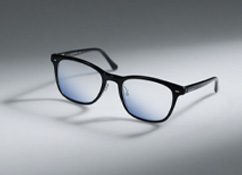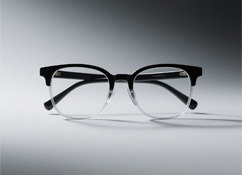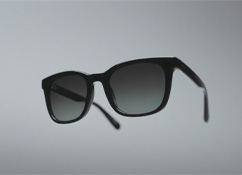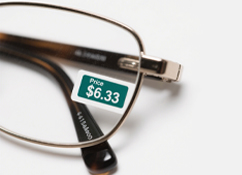Adult Eye Care: Why It Matters (And How to Protect Your Vision)
Most of us assume eye health is just for kids—like getting screenings for lazy eye in preschoolers or tracking nearsightedness in teens. But here’s the truth: your eyes don’t stop needing care once you’re an adult. Even if you’ve had laser surgery or never needed glasses, age, lifestyle, and health conditions can put your vision at risk. Let’s break down why adult eye health matters—and how to keep your eyes strong for years to come.
Why Adults Can’t Ignore Eye Health
Your eyes work hard every day, and over time, that takes a toll. While kids deal with issues like nearsightedness, adults face unique risks: conditions like retinal diseases, dry eye, or age-related vision loss. These problems often sneak up slowly—by the time you notice symptoms, damage might already be done.
The "back of the eye" (retina and surrounding tissues) is especially vulnerable. Its blood vessels and nerves are the only ones in your body you can see directly—and they’re a window to your overall health. Eye exams can even spot early signs of diabetes, high blood pressure, or other systemic issues.
Common Eye Conditions in Adults to Watch For
Many adult eye problems are treatable—if caught early. Here are the ones to know:
H3: Diabetic Retinopathy
If you have diabetes, high blood sugar can damage the tiny blood vessels in your retina. It’s the leading cause of vision loss in working-age adults, but early on, it often has no symptoms. As it gets worse, you might notice blurry vision, dark spots, or even blindness. The fix? Controlling blood sugar and getting annual eye exams—even if your vision feels fine.
Age-Related Macular Degeneration (AMD)
AMD affects the "macula," the part of your retina that helps you see fine details (like reading or recognizing faces). It’s the top cause of central vision loss in people over 50. About 15% of adults over 65 have AMD, and that jumps to 37% for those over 75. Symptoms include blurry central vision or "distorted" sight (like straight lines looking wavy).
Retinal Detachment
This happens when the retina pulls away from the back of the eye—think of it like a wallpaper peeling off a wall. It’s more common in older adults, especially those with severe nearsightedness. Early signs: flashes of light, floaters (tiny spots in your vision), or a "curtain" blocking part of your sight. Act fast—delaying treatment can lead to permanent vision loss.
"Eye Strokes" (Central Retinal Artery Occlusion)
Like a stroke in the brain, an "eye stroke" happens when a blood clot blocks the artery feeding the retina. It causes sudden, painless vision loss—often in one eye. Risk factors include high blood pressure, hardening of the arteries, or diabetes. Time is critical: while brain strokes have a 3–6 hour window for treatment, eye strokes need help within 90 minutes to save vision.
Floaters
Those tiny, wispy spots that drift across your vision? They’re usually harmless, caused by age or nearsightedness. As the gel-like fluid in your eye (vitreous) thins, it can clump, creating shadows on the retina. They’re more noticeable in bright light (like looking at the sky), but rarely a problem—unless they come suddenly with flashes, which could signal retinal detachment.
5 Daily Habits to Protect Adult Eyes
You can’t stop aging, but these simple habits lower your risk of eye problems:
Eat for Eye Health
Smoking and diets high in fat/cholesterol raise your risk for AMD and other retinal diseases. Instead, load up on foods rich in vitamins A, C, and E (think leafy greens, citrus, nuts) and omega-3s (salmon, sardines). Quitting smoking and limiting alcohol also helps—your eyes (and heart) will thank you.
Keep Lighting Gentle
Glare from sunlight, harsh lamps, or screen reflections strains your eyes. Position your computer so it’s not facing a window (to avoid glare), and keep screen brightness close to the room’s light level. If you’re reading, use a soft, shaded lamp—no bright overhead lights.
Give Your Eyes a Break
Staring at screens or books for hours dries out your eyes (you blink half as much when focused!). Tears keep your eyes lubricated and healthy—too few, and you might feel burning, grittyness, or blurriness. Follow the 20-20-20 rule: every 20 minutes, look at something 20 feet away for 20 seconds. Step outside to gaze at trees or buildings—distance helps relax eye muscles.
Sleep Well & Stay Calm
Poor sleep and stress mess with your eyes. Disrupted sleep cycles or late nights can trigger eye inflammation, while chronic stress raises risk for conditions like central serous retinopathy (a type of fluid buildup in the retina). Aim for 7–8 hours of sleep, and try mindfulness or deep breathing to keep stress in check.
Block Harmful UV Rays
Sunlight’s UV rays damage your eyes over time—raising risk for cataracts, corneal burns, or even retinal damage. Wear sunglasses that block 99–100% of UVA and UVB rays (look for that label!) whenever you’re outside, even on cloudy days.
FAQ: Adult Eye Health
Q: How often should adults get eye exams?
A: For most healthy adults, every 1–2 years. If you’re over 60, have diabetes, high blood pressure, or a family history of eye disease, go yearly—these raise your risk for problems.
Q: I’ve never had vision issues. Do I still need exams?
A: Yes! Many serious eye conditions (like diabetic retinopathy) have no early symptoms. Exams catch them before they harm your vision.
Q: Can dry eye be fixed?
A: Often, yes. Artificial tears, warm compresses, or taking breaks from screens help. If it’s severe, your doctor might suggest prescription drops or other treatments.
Final Thought
Your eyes keep up with your busy life—return the favor. Eye care isn’t just for kids; adults need it more as the years pass. Small habits—like taking screen breaks, wearing sunglasses, and getting regular exams—go a long way. After all, clear vision lets you enjoy every moment, from reading a book to watching a sunset.











